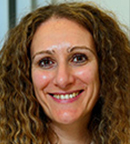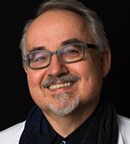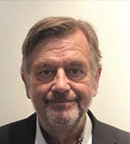Access to cancer treatments is highly unequal across Europe, both for new drugs in development (due to disparities in access to clinical trials) and for currently approved drugs (due to disparities in health-care spending by different countries), according to results from two studies being presented at the ESMO Virtual Congress 2020.
Access to Clinical Trials
Countries in Western Europe run a higher number of clinical trials for novel cancer treatments than countries in Eastern and Central Europe, according to an analysis of clinical trials active in different countries to be presented by Carneiro et al (LBA66_PR). The study indicated large differences in access to new treatments in development for European patients with cancer, depending on where they live.
“Our study gives us proof of what we previously suspected—that there is a huge asymmetry in the number of clinical trials for cancer treatments in different countries,” said study coauthor Teresa Amaral, MD, of University Hospital Tübingen, Germany.

Teresa Amaral, MD
“Having access to clinical trials confers several benefits to patients [with cancer]. It means they can potentially access novel therapies earlier during the trial phase rather than having to wait for licensing and reimbursement,” she explained. “Also, all trial participants benefit from the regular follow-up and monitoring involved in taking part in a clinical study.”
The researchers searched the ClinicalTrials.gov database for interventional clinical trials in adults with tumors between 2009 and 2019. Analyzing the number of trials in 34 European countries revealed huge differences. Albania had the lowest number of active clinical trials for cancer (0.14 clinical trials per 100,000 population), whereas Belgium had the highest number (11.06 per 100,000).
Further results showed that the total number of oncology clinical trials performed in European countries increased by 33% between 2010 and 2018, with a much greater increase in early-phase trials (61% increase in phase I–II trials) than late-phase trials (7% increase in phase II–III trials).
Dr. Amaral suggested that this might be due to a shift in clinical trial design. “There is no longer a clear progression from first-in-human studies to phase I, phase II, and then much larger phase III trials. Instead we tend to have more trials in earlier phases, namely phase II, which might expand to later phases.”
The increase in early-phase trials was again asymmetrical, and the growth rate depended on the baseline number of trials. “Countries need to have the necessary infrastructure and expertise to conduct trials of any type, including early-phase trials,” said Dr. Amaral.
“A higher number of phase I trials is a sign of more active research going on in a particular country, with the appropriate infrastructure and necessary incentives to conduct clinical trials,” said Thomas Cerny, MD, Professor of Medical Oncology at the University of Berne, Switzerland, and member of the ESMO Principles of Clinical Trials and Systemic Therapy Faculty.

Thomas Cerny, MD
“The only way to develop new cancer drugs is to be able to put patients into clinical trials,” he added. “The difference in the number of clinical trials per head of population, with more trials in wealthier countries, means access to clinical trials and innovative drugs is just not possible for patients living in many less-wealthy countries.”
Although the study is descriptive, he considered it made best use of the available data to evaluate differences in clinical trial availability in different countries.
He added, “Clinical studies require a solid infrastructure in terms of personnel and equipment, and this depends on a country’s overall financial situation. These requirements are increasing, so the gap in clinical trial capacity is not likely to reduce soon.”
“There is still a lot to do to increase access to clinical trials for patients [with cancer] in different countries,” agreed Dr. Amaral. “The voluntary harmonization procedure, in which trial sponsors can submit trial documentation to several countries at the same time, has streamlined the process and reduced the approval time for trials, but more is needed to increase access to clinical trials in countries where the number of trials is currently low.” The research group is currently exploring the reasons for the asymmetry to inform potential solutions.
Access to Treatments by Country
A health economics analysis reported by Wilking et al (1588MO_PR) showed that wealthier European countries spent 10 times as much as poorer countries per inhabitant on cancer medicines in 2018, following a similar pattern to that seen for clinical trials.
“There was a huge difference in spending on cancer medicines,” said lead author Nils Wilking, PhD, of the Karolinska Institute, Stockholm. “We found that inequalities are mainly related to countries’ economic strength and not to the disease burden of cancer.”

Nils Wilking, PhD
The researchers estimated cancer-specific health expenditure for 31 countries (the 27 members of the European Union, plus Iceland, Norway, Switzerland and the United Kingdom) using national figures for 2018. Results showed the top spenders on cancer medicines were Austria, Germany, and Switzerland (Euros = 90–108 per capita), while the lowest spenders were the Czech Republic, Latvia, and Poland (Euros = 13–16). The largest differences in spending between countries were seen for immuno-oncology drugs.
“There are two main factors accounting for the differences in spending on cancer medicines: one is shortage of money, and the other is drugs not being approved for use by some health-care systems,” suggested Dr. Wilking. He noted that, although the study did not consider data at the individual patient level, the difference observed in access to cancer medicines would affect patient outcomes.
Dr. Cerny commented, “It is difficult to assess the real costs in any country because systems vary in different countries, and there are many hidden costs not reflected in the databases used…. [B]ut the study essentially shows the more a country has to spend, the more its inhabitants have access to cancer medicines.”
Considering how to widen access to cancer medicines, Dr. Wilking suggested, “We need a model in which we incentivize innovation of valuable medicines through outcome-based payment models and consider a disease area and what a society is able to pay for treatment. The work of health technology assessment organizations has been important, and a critical scrutiny and evaluation of new drugs should always be applied.”
Disclosure: For full disclosures of the study authors, visit esmo.org.

